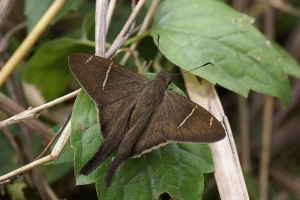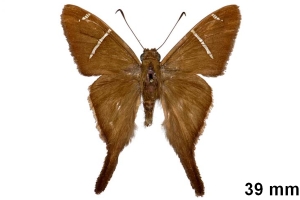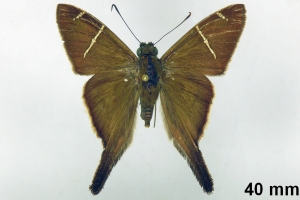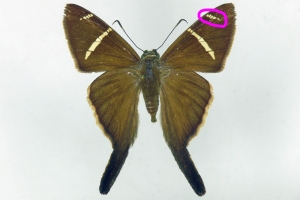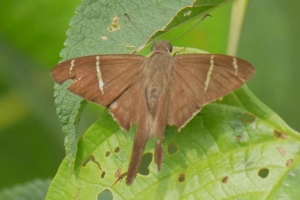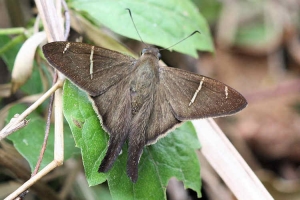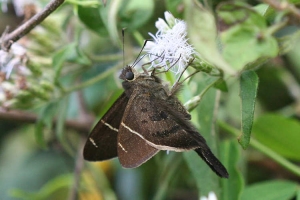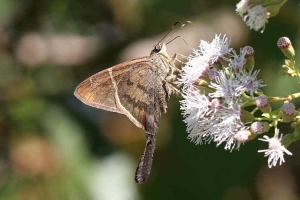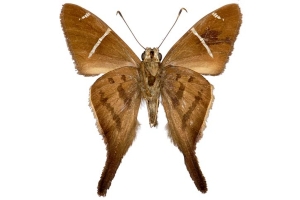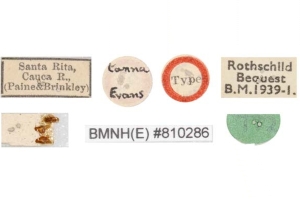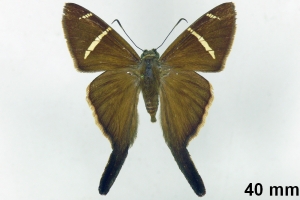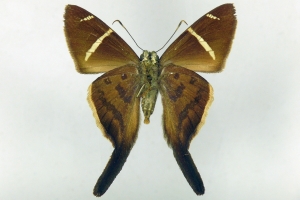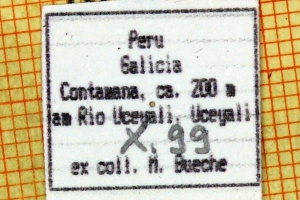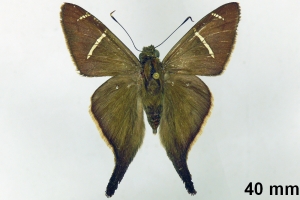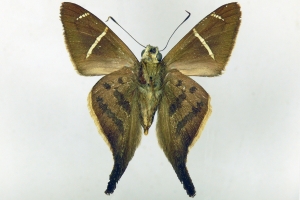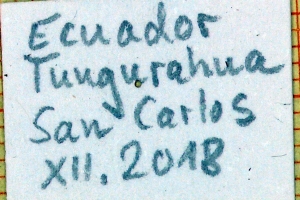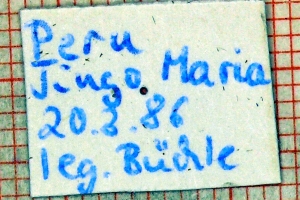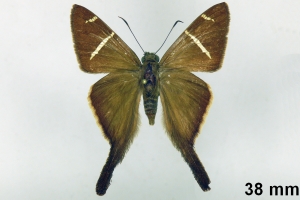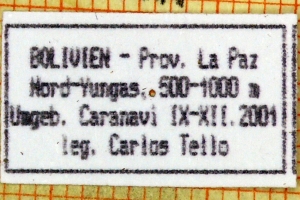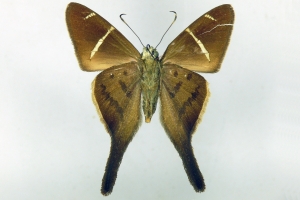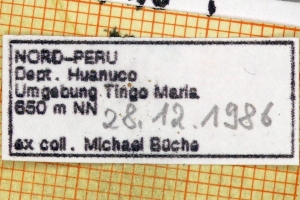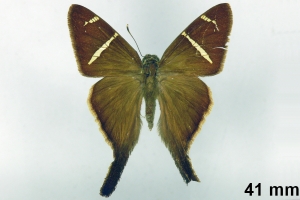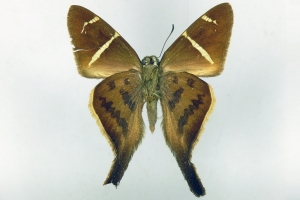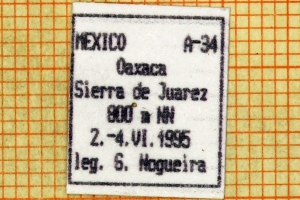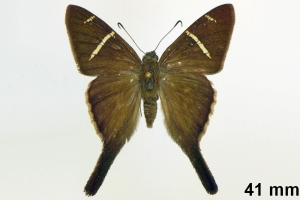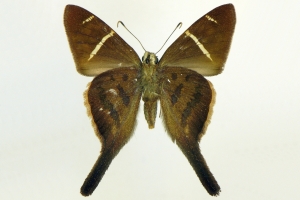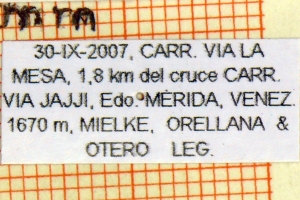Länder:

 +14Kontinente:NAMAKISA
+14Kontinente:NAMAKISA


 +14Kontinente:NAMAKISA
+14Kontinente:NAMAKISANeues Layout der Navigation (Beta Test)
LebendfotosDiagnoseWeitere InformationenAndere KombinationenFaunistikLiteraturInformationen auf anderen Websites (externe Links)
1. Lebendfotos
1.1. Falter
1: Costa Rica, Ciudad Colon, 1.5 km SW Universidad Para La Paz, Finca Hamadryas, 850 m, 15. Dezember 2008 - 10. Januar 2009 (fot.: Bernhard Jost), det. Ernst BrockmannForum
2: Peru, Loreto, Maynas, zwischen Iquitos und Nauta, 100 m, 4. August 2022, Tagfund (det. als Spicauda simplicius & fot.: Karsten Schönherr), Bestimmungskorrektur: Ernst BrockmannForum
3-5: Costa Rica, San Jose, Ciudad Colon, El Rodeo, 18. Dezember 2008 (det. & fot.: Heiner Ziegler)
2. Diagnose
2.1. Männchen
1-3: Syntypus ♂, Daten siehe Etiketten (fot.: Nick V. Grishin, Fotos bearbeitet: Michel Kettner), © Images copyright Trustees Natural History Museum, used with permission.
4-6: ♂, Daten siehe Etiketten (coll., det. & fot.: Ernst Brockmann, Fotos bearbeitet: Michel Kettner)
7-9: ♂, Daten siehe Etiketten (coll., det. & fot.: Ernst Brockmann, Fotos bearbeitet: Michel Kettner)
2.2. Weibchen
1-3: ♀, Daten siehe Etiketten (coll., det. & fot.: Ernst Brockmann, Fotos bearbeitet: Michel Kettner)
4-6: ♀, Daten siehe Etiketten (coll., det. & fot.: Ernst Brockmann, Fotos bearbeitet: Michel Kettner)
7-9: ♀, Daten siehe Etiketten (coll., det. & fot.: Ernst Brockmann, Fotos bearbeitet: Michel Kettner)
10-12: ♀, Daten siehe Etiketten (coll., det. & fot.: Ernst Brockmann, Fotos bearbeitet: Michel Kettner)
13-15: ♀, Daten siehe Etiketten (fot.: Ernst Brockmann, Fotos bearbeitet: Michel Kettner), coll. Departamento de Zoologia, Universidade Federal do Paraná, Curitiba, Paraná, Brazil.
2.3. Determinationshilfe
Spicauda tanna hat in der Regel fünf Apicalflecke, die anderen Arten der Gattung maximal vier.
3. Weitere Informationen
3.1. Andere Kombinationen
- Urbanus tanna Evans, 1952 [Originalkombination]
3.2. Faunistik
Nach [Global Biodiversity Information Facility] kommt die Art in Mexiko, Panama, Kolumbien, Costa Rica, Trinidad und Tobago, USA, Honduras, Brasilien, Nicaragua und El Salvador vor.
Locus typicus gemäß Erstbeschreibung: Colombia.
(Autor: Michel Kettner)
3.3. Literatur
- Erstbeschreibung: Evans, W. H. (1952): A Catalogue of the American Hesperiidae indicating the classification and nomenclature adopted in the British Museum (Natural History). Part II (Groups B, C, D) Pyrginae. Section 1: i-v, 1-178, pl. 10-25. — Digitalisat auf biodiversitylibrary.org: [94], [pl. 18]
- Li, W., Cong, Q., Shen, J., Zhang, J., Hallwachs, W., Janzen, D.H. & N.V. Grishin (2019): Genomes of skipper butterflies reveal extensive convergence of wing patterns. — Proceedings of the National Academy of Sciences (PNAS) 116 (13): 6232-6237. [zum PDF auf pnas.org]















